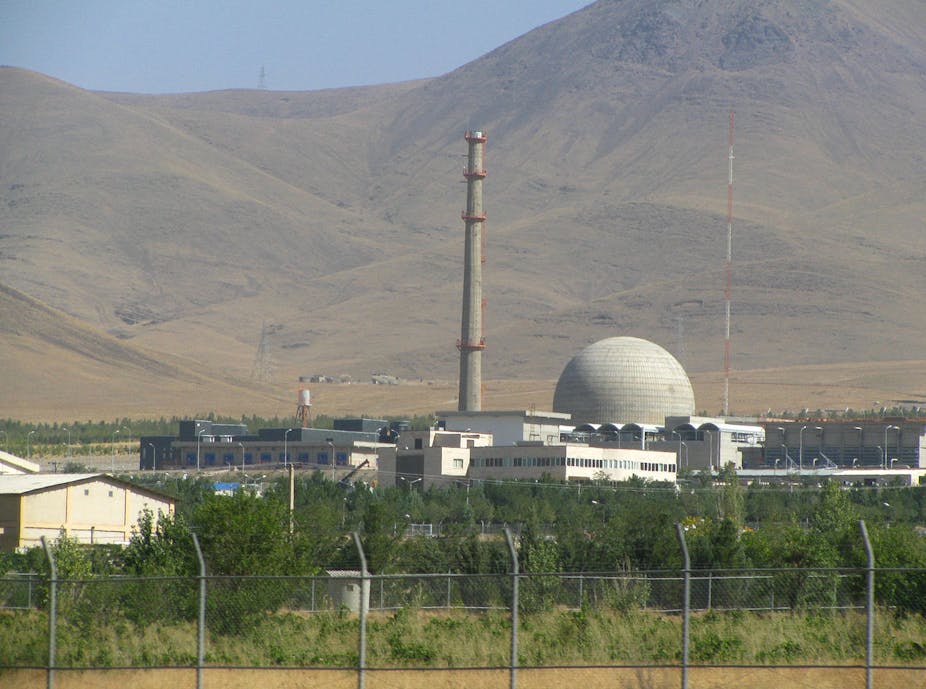Amid warnings from Washington that the US will be watching very closely, the interim deal agreed late last year to scale-back Iran’s nuclear programme has come into force, a positive development in a slow-burning crisis that has built up dangerous levels of heat in the past few years.
Carved out in negotiations between Iran and the permanent UN Security Council members, the US, Britain, Russia, China and France, plus Germany, this freeze or strategic stalemate is clearly preferable to military action led by the US or Israel. That would inevitably only herald yet more major instability in the Middle East.
But this agreement is no panacea. It addresses only part of the problem – Iran’s programme of enriching uranium to weapons-grade level – and only for a limited time of six months. So the real challenge is to turn this temporary freeze into a long-term concrete deal. Assuming, of course, that both sides keep to the spirit of the arrangement.
Watershed moment
The heart of the deal reached in November is that Iran, in return for a temporary lifting of the economic sanctions that have devastated its economy, has agreed to three things. It will stop building uranium enrichment centrifuges and plutonium re-processing facilities – the two materials necessary to build a nuclear bomb. It will cap uranium enrichment – bringing it down to well below weapons-grade levels, around 95%-pure uranium-235, but high enough (around 3-4% uranium-235) to be used in civilian power reactors. And it will allow extensive oversight and regular inspection by IAEA monitors of its IR-40 nuclear reactor and heavy water plant at Arak, and other declared facilities.
This is a watershed moment. The Iranian right to enrich uranium, a necessary step in producing the fissile material required for civilian reactors and nuclear weapons, has been at the centre of the dispute for nearly a decade. If Iran can’t enrich uranium to high levels of purity or separate large amounts of plutonium from spent nuclear fuel then it cannot build a nuclear warhead.
Claim and counter-claim
Throughout the last decade, Iran has consistently claimed its uranium enrichment programme is for civilian purposes, that is, for generating power and medical isotopes, as is their right under the Nuclear Non-Proliferation Treaty (NPT). The international community, represented by the five permanent members of the UNSC and Germany (the P5+1), has always argued that Iran uses the civilian exclusions of the NPT as cover for a nuclear weapons programme. Given the vast oil and gas reserves Iran enjoys, this is a fair point.
Complicating matters further are the previous revelations of secret facilities, evidence that Iran has worked secretly to develop nuclear warhead technology and that the Iranian leadership has continually mislead and frustrated IAEA weapons inspectors. So it’s entirely possible that there could be further undeclared nuclear or weaponisation facilities in Iran that will continue working despite this agreement. Essentially, the problem is that any state with an advanced military force, particularly in respect of its ability to deploy ballistic missiles, and sufficient technological sophistication to enrich uranium can theoretically build a nuclear weapon.
In fact the standoff with Iran is an example of a enduring trend in nuclear proliferation, where states can all but acquire the capability to build a nuclear bomb, without technically breaking international law. This, known as nuclear latency, may well be what the Iranian leadership seeks, rather than building a bomb outright.
Hiding behind civilian shroud
The problem is that international law makes it possible for states to move very close to weaponisation before they actually contravene the NPT or other international laws. India, North Korea, Pakistan, and South Africa initially developed nuclear weapons under a civilian guise. Israel, while it still neither confirms nor denies possessing nuclear weapons, did the same. And many other states such as Argentina, Brazil, South Korea, Sweden, Switzerland and Taiwan used the same rouse before abandoning their nuclear ambitions. Others, notably Japan, currently have the ability and know-how to quickly build a nuclear bomb should they decide to, because of their advanced civilian nuclear industry. So really, Iran is in many ways merely the latest manifestation of a predicament that has dogged nuclear non-proliferation since the 1960s.
As a result the Geneva deal, while praiseworthy, is only a first step in finding a lasting resolution with Iran. The temporary freeze on enrichment does not involve giving up fissile material stockpiles, nor surrendering centrifuges or facilities. At best the deal opens the door to a peaceful resolution to a potential conflict that neither the West nor Iran wants. At worst it merely postpones difficult decisions.
It’s possible that the Iranian leadership, difficult to read at the best of times, may not have come to a decision on the nuclear programme. As such, any move to prevent full weaponisation must be vigorously pursued. But recent history is littered with states – most recently North Korea – that have taken advantage of similar diplomatic thaws to carry on regardless.

